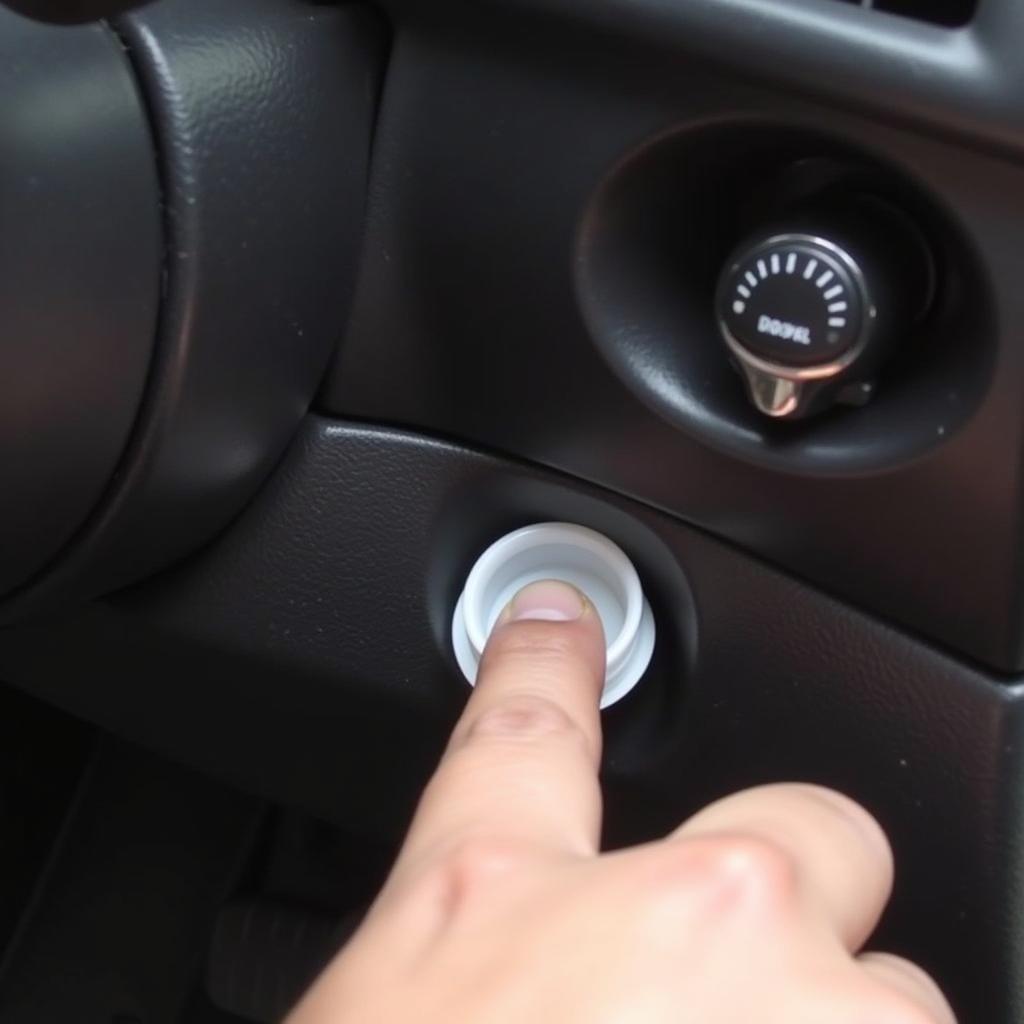The 2009 Dodge Intrepid is a reliable vehicle, but like any car, it can experience occasional issues. One common problem owners face is an intermittent brake warning light. This light can be frustrating, as it often comes on randomly and may not indicate an immediate problem. However, it’s crucial to understand the possible causes and address them promptly to avoid potential safety hazards.
Understanding the Brake Warning Light
The brake warning light is designed to alert you to a potential issue with your vehicle’s braking system. When the light comes on, it’s important to investigate the problem and take appropriate action.
The most common causes of a 2009 Dodge Intrepid intermittent brake warning light include:
- Low brake fluid: This is often the simplest and most common cause. As brake pads wear down, brake fluid is used up. Low fluid levels trigger the warning light.
- Faulty brake pad sensor: This sensor, located on the brake pads, alerts the car’s computer when the pads are worn down and need replacement. A faulty sensor can trigger the warning light even if the brake pads still have sufficient material.
- Faulty brake light switch: This switch, located near the brake pedal, sends a signal to the car’s computer when the brake pedal is pressed. If the switch malfunctions, it can cause the warning light to illuminate.
- Faulty brake system components: Other problems, such as a faulty wheel cylinder, caliper, or master cylinder, can also trigger the brake warning light.
- ABS system malfunction: The anti-lock braking system (ABS) also has sensors and components that can cause the brake warning light to come on.
Diagnosing the Issue
Here’s how to troubleshoot the intermittent brake warning light on your 2009 Dodge Intrepid:
-
Check the brake fluid level: Open the hood and locate the brake fluid reservoir. It’s usually a clear plastic container with markings indicating the “full” and “low” levels. If the fluid level is below the “full” mark, add brake fluid to the reservoir.
-
Inspect the brake pads: Remove the wheels to check the brake pads. If the pads are worn down to the wear indicator (a small metal tab that protrudes from the pad), they need to be replaced.
-
Check the brake light switch: If the warning light comes on when you press the brake pedal, the brake light switch might be faulty. A mechanic can test the switch with a multimeter.
-
Have the ABS system inspected: If the warning light comes on and the ABS system is not working properly, it’s essential to have the ABS system inspected by a qualified mechanic.
What To Do If The Warning Light Stays On
If the brake warning light stays on, regardless of the steps you’ve taken, it’s best to avoid driving your car and seek professional assistance. Ignoring the light can lead to serious consequences, including brake failure.
Here’s what you should do if the brake warning light remains illuminated:
- Do not drive your car: It’s critical to avoid driving until the issue is resolved.
- Contact a qualified mechanic: Schedule an appointment with a trusted automotive technician to diagnose the problem.
- Explain the issue clearly: Describe the brake warning light behavior, how it behaves, and how long it has been on.
- Provide the car’s history: If you have any information about recent brake work or modifications, share it with the mechanic.
“My advice is to always address any warning light promptly. Ignoring them can lead to more significant problems down the road.” – John Smith, Master Mechanic
Prevention Tips
Here are some tips to help prevent a brake warning light from appearing on your 2009 Dodge Intrepid:
- Regularly inspect your brake pads: Check the brake pad thickness every few months. Replace them before they wear down to the wear indicator.
- Keep your brake fluid topped up: Monitor the brake fluid level and add fluid as needed.
- Schedule regular brake maintenance: Have your brakes inspected and serviced by a professional mechanic according to the manufacturer’s recommendations.
Conclusion
An intermittent brake warning light on a 2009 Dodge Intrepid can be a concerning issue. By understanding the potential causes and taking appropriate action, you can address the problem and keep your vehicle safe. If you experience this warning light, remember to check the brake fluid level, inspect the brake pads, and have the ABS system inspected if necessary.
FAQs
Q: What does it mean if the brake warning light is flashing?
A: A flashing brake warning light usually indicates a problem with the ABS system. You should have the ABS system diagnosed by a qualified mechanic.
Q: Is it safe to drive with a brake warning light on?
A: While it might not mean immediate brake failure, it’s highly recommended to avoid driving with a brake warning light on. It’s a sign that something is wrong with the brake system, and it’s best to address the issue promptly.
Q: Can I reset the brake warning light myself?
A: You can try resetting the warning light by disconnecting the battery for a few minutes, but this is not a guaranteed solution. The warning light will likely return if the underlying issue is not addressed.
Q: How often should I get my brakes inspected?
A: It’s recommended to have your brakes inspected at least once a year or every 12,000 miles. This will ensure that your brakes are in good working order and prevent any unforeseen problems.
Q: What are the signs of brake pad wear?
A: A squeaking or grinding noise when braking, a spongy brake pedal feel, and a noticeable decrease in braking performance are all signs of brake pad wear.

